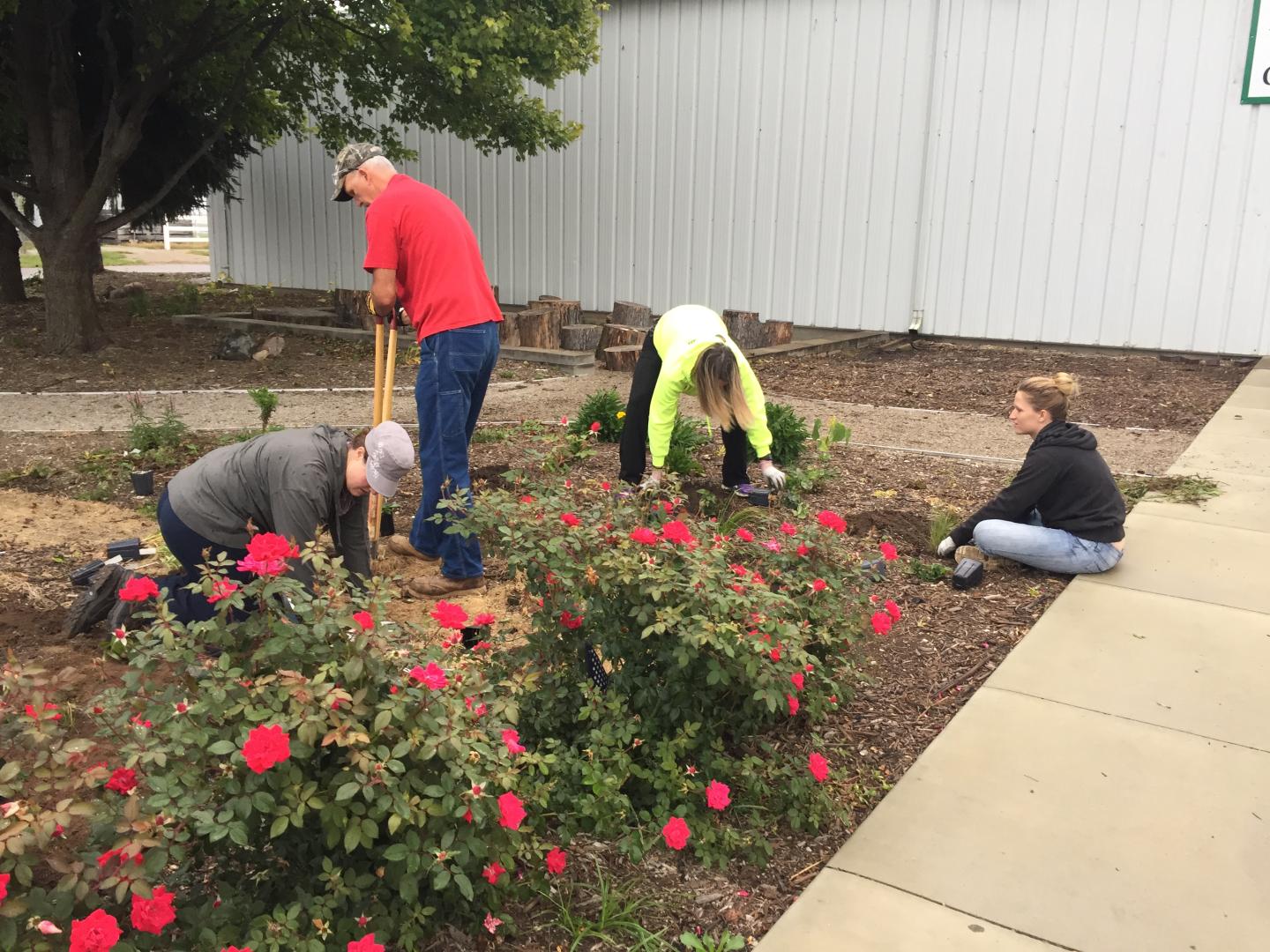Partnership Agreement a Win-Win for Bartholomew County in Indiana
The goal of the Program Support Specialists agreement between NRCS and Bartholomew County SWCD was to provide better service to our common customers.
When Clint Harrison, district conservationist for USDA’s Natural Resources Conservation Service (NRCS), transferred from Franklin County to Bartholomew County, he knew it would take some time to become familiar with the area and workload that awaited. And, while working in a new county can often be overwhelming, Clint quickly learned that he had incredible support from his local Soil and Water Conservation District (SWCD) staff. Heather Shireman, SWCD coordinator, and Jenny Whiteside, watershed coordinator, have been assisting NRCS staff for the past several years, but not until a few years ago did they enter into a formal agreement.
In 2015, Indiana NRCS entered into a contribution agreement with the Indiana Association of Soil and Water Conservation Districts for Program Support Specialists (PSS) to address the needs to fully meet administrative workloads for Farm Bill programs.
The intent of this agreement was to reduce administrative workload on NRCS field staff, allowing more time to be spent in the field completing conservation plans and related field activities. PSS agreements focus on five main tasks: uploading contract information; assembling contract files and documentation; managing correspondence; data entry and reviewing documentation; and compliance and additional miscellaneous activities.
Bartholomew County is one of several Indiana SWCDs that have entered into this agreement. Although the work performed as part of the agreement may vary in each office, they all have the same goal in mind – providing better service to our common customers.
“I feel confident that both Heather and Jenny can perform these tasks accurately without having to look over their shoulders at everything they’re doing,” said Harrison. “It’s incredibly important I have that confidence, so I can focus my efforts on meeting our farmers in the field and developing sound conservation plans.”

Heather and Jenny have split the responsibilities, working on anything from loading forms into the Document Management System and creating maps for HEL determinations to processing contract payments and assisting with Conservation Reserve Program tasks. Not only do they do work for Bartholomew County, they also do work for eight other counties throughout Indiana. Great communication with these counties has been critical to the success of the extended agreements.
The Bartholomew SWCD office has encouraged their district board to take full advantage of this agreement far beyond helping their local farmers gain better service. They are putting something back in to the community.
“We’ve been able to utilize the money coming in to offset the cost of some community driven projects,” said Shireman. “We’ve done multiple projects including cost-share programs for cover crops and rain barrels, but our biggest accomplishment to date has been our conservation area at the fairgrounds.”
Since the inception of this agreement, Heather and Jenny knew they wanted to do something different with the incentives received from the PSS agreement – thus sparking the idea to install a small-scale model of the state fair’s Pathway to Water Quality exhibit at their own fairgrounds. The district spearheaded this effort in 2016 to create “Conservation Corridor,” an educational pathway located at the Bartholomew County Fairgrounds.
“People are becoming more aware and more concerned about water quality in their community,” said Shireman. “We feel this corridor fulfills a need to showcase watershed practices and is a great educational opportunity for urban and rural dwellers alike.”
The pathway is in the heart of the fairgrounds, bordering the community center which holds various events throughout the year. Sections throughout the pathway host a variety of conservation areas including native plants, cover crops, bioswales, pollinator habitat and many more practices that can be implemented on urban or rural land. The PSS dollars received by the district, along with a handful of volunteers have made this possible.
Efforts to expand the corridor are underway. Their main goal is to install more informative signage to help educate visitors about the different practices installed along the path. Plans for future PSS funds include a rain garden, compost area and prairie grass section.

